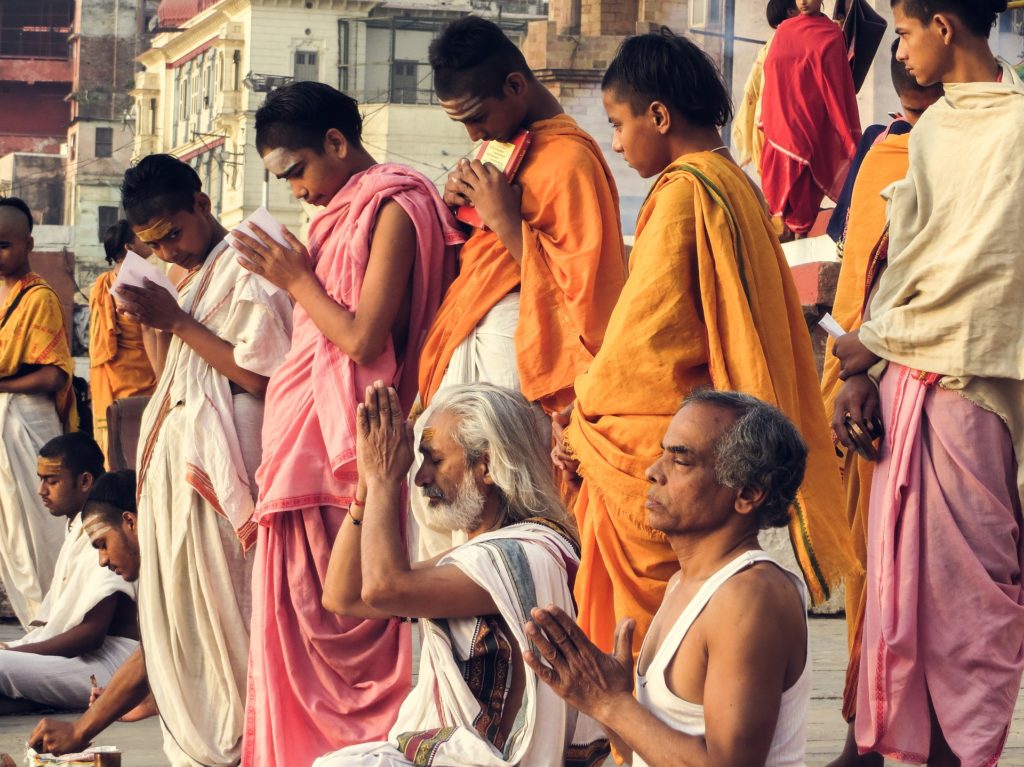
The Indian Varna system (caste system), which is often painted negatively and presented likewise even in school textbooks, is perhaps one of the most misinterpreted social hierarchies of the world. It is popularly accepted that the Indian caste system is at least 3000 years old, though an analysis of the Vedic literatures suggests that it is perhaps as old as Sanatana Dharma (Hinduism) itself. This article attempts to exhibit the system of Varna (class) and Ashrama (order) as it had been originally conceived and how it has gradually degenerated with time. The article also seeks to establish how the caste system is an integral part of any successful society and an indispensable tool to ensure its survival.
It is said that the division of the Indian society on the basis of castes, this caste system, finds its origin in the ancient Indian varnashrama system. Varnashrama is a system of classifying the society on the basis of ‘varnas’ and ‘ashramas’. Now what are varnas ? ‘Varna’ basically translated to class. Now there are four varnas that has been broadly identified.
The four Varnas are –
- brahmanas – the priestly class.
- Kshatriyas – those who are rulers and administrators
- Vaishyas – the mercantile class
- Shudras – the labourers or he working class.
While Ashramas is the division of society on the basis of the four orders of life –
- Brahmacharya , or the celibates
- Grihasta, or the householder
- Vanaprastha – one who is retired
- Sannyasi – one who is renounced
Degradation of the Indian Varna system :
The Varnasrama system (division of the society into class and order) in India has declined with time and this is one of the primary reasons for the troubles and degeneration of this country. India could have otherwise taken a leadership role in guiding modern human civilization. Previously, the people were divided into castes according to their individual nature and qualifications. The caste system would ensure that civilization runs smoothly. There are several instances in the Vedic scriptures that establish the fact that caste was previously determined by evaluating one’s nature and not just his/her lineage. In the Kshatriya (princely) dynasty of Narisyanta, the great sage Jatukarna was born who started a famous brahmana lineage called Agnivesyayana. In the Aila Kshatriya dynasty, Jahnu the son of Hotraka, became a brahmana. From king Vitatha of Bharadvaja’s dynasty came Nara and Garga, who were brahmanas and whose sons, in turn, were Kshatriyas. From King Bharmyasva’s Kshatriya line were born Satananda of the Moudgalya gotra and Kripacharya. There are innumerable such examples. The systematic implementation of the caste system was instrumental in expanding the glories of Bharata. Egypt, China, and other nations used to seek guidance from the people of India with great reverence.
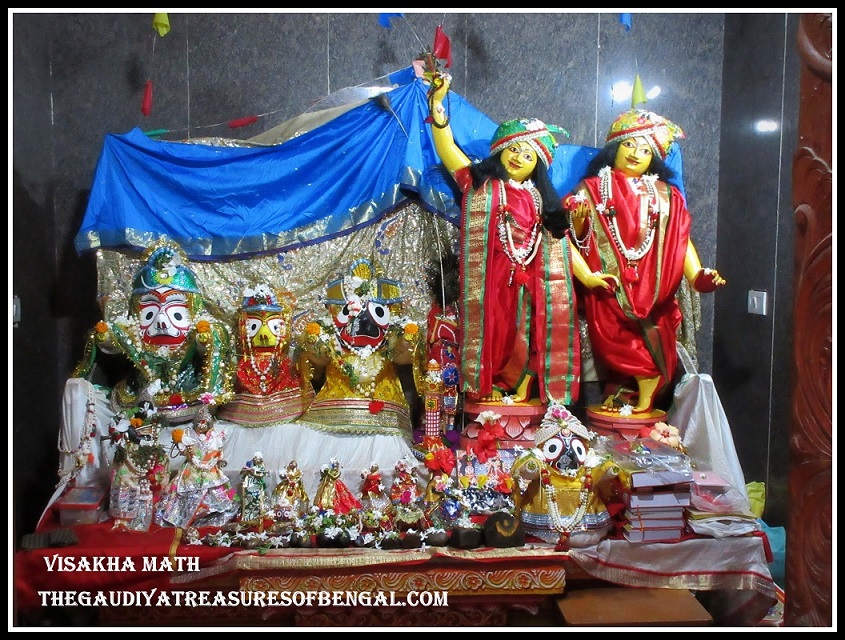
In Chaitanya Sikshamrita, it has been asserted how the scientific and proper implementation of the caste system continued to be practiced in India for a long time, until Jamadagni and his son Parasurama claimed to be brahmanas, although both of them possessed a Kshatriya mentality. By following a caste as opposed to their own nature, they created animosity between the two classes (brahmana and Kshatriya). Subsequently, the practice of judging one’s caste solely based upon one’s birth became firmly established.
As birth and lineage became the only determining factor of one’s caste, conflict and exploitation became rampant in society. Those with no Brahmanical qualities but brahmanas only in name, introduced scriptures harboring selfish interests in their heart, thus cheating the other classes. Likewise, Kshatriyas, crowned as kings and possessing no Kshatriya qualities, were subsequently defeated in battles. Those without Vaishya nature became merchants and this greatly weakened the mercantile community. Similarly, laborers without the Shudra mentality and without the skills to perform a required task turned into thieves and dacoits. Being devoid of scriptural guidance, the country suffered from foreign invasions. The present pathetic state of India, once the guru of the whole world, is not due to its old age but due to the corruption of its ideal caste system.
The fallacy of birth determining caste : Who is a brahmana?
As previously discussed, there are four castes according to the Vedas – Brahmana, Kshatriya, Vaishya, and Shudra. The brahmanas or the priestly class are considered to be the most esteemed, followed by the Kshatriyas, Vaishyas, and the Shudras. This is confirmed in both the srutis and the smritis. Now the question arises as to who is a brahmana? The living entity, the body, the caste, the knowledge, religiosity – of these which is the brahmana?
If one argues that the living entity is the brahmana, then it must be noted that as per the Vedic scriptures, the living entity is a spirit soul that transmigrates from one body to the other. Sometimes it occupies the body of a brahmana, sometimes that of a Kshatriya, sometimes shudra, or at times even the body of other animals. The soul is part and parcel of the Lord and its transmigration occurs depending on the Karma (pious or impious credits) accumulated by the individual. So the living entity can definitely not be the brahmana.
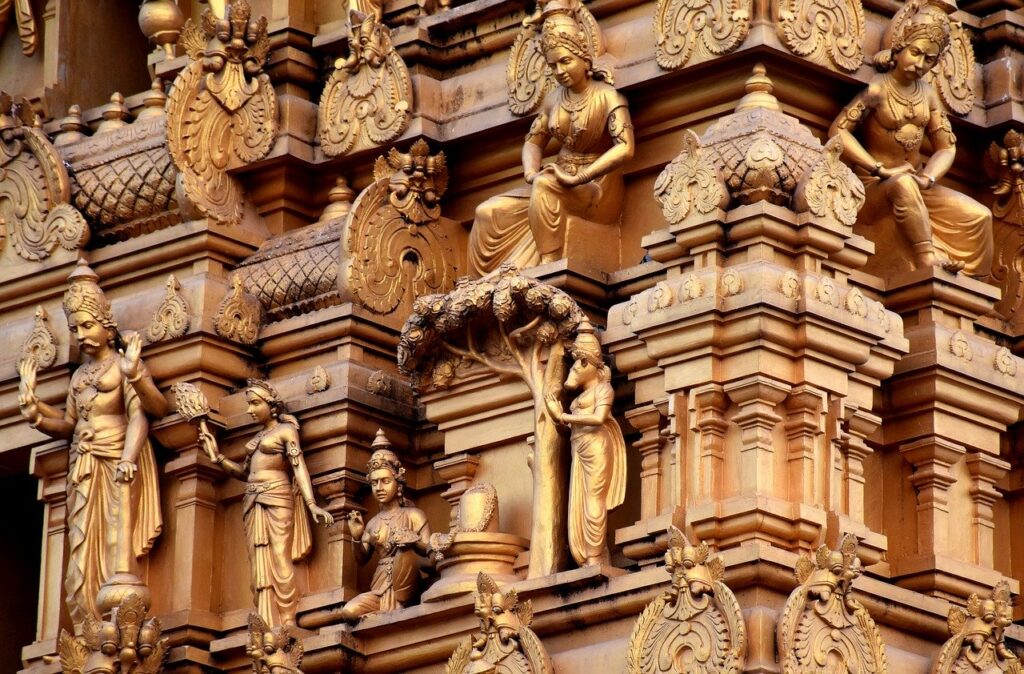
If it is argued that the body is the brahmana, then it needs to be understood that the bodies of all living entities, starting from the body of a so-called brahmana down to that of a ‘chandala’ or a barbarian, are made of the same five gross elements (earth, water, fire, ether, and wind). Birth, Death, and diseases equally affect all bodies. Furthermore, there is no law that brahmanas are white, the Kshatriyas are red, the vaishyas are yellow, etc. So there cannot be any distinction of caste based upon one’s body. Additionally, when the son of a brahmana lights the funeral pyre of his dead father, he does not sin killing a brahmana. Hence the body is definitely not the brahmana.
So is one’s lineage the brahmana? This also cannot be true as several great sages have been born of other living entities. Rsysringa was born from a deer, Kaushika muni was born of Kusa grass, Jambuka was born of a jackal, Valmiki was born from an anthill, Srila Vyasadeva was borne by a fisherman’s daughter, Gautama was born from the back of a rabbit, Vasistha muni was born from Urvasi and sage Agastya was born from a pitcher. Therefore, lineage is definitely not the brahmana.
Is knowledge then the ‘brahmana’? No this is not the case either as there have been great personalities in the past who were Kshatriyas or belonging to other castes possessing vast knowledge on Absolute truth. Yudhisthira Maharaja was very learned and so was grandsire Bhishma. Both of these great gentlemen were Kshatriyas. Similarly, religiosity is also not the determining factor as there are innumerable references of kings donating Gold in charity to others.
Who then is a brahmana? This question has been very nicely answered by Yudhisthira Maharaja and it is recorded in the Vana Parva of Mahabharata. The snake asked, ‘O Maharaja Yudhisthira, who is a brahmana and what is the object of knowledge? You are very intelligent, therefore I will be enlightened by your answer’. Maharaja Yudhisthira replied, ‘A person who possesses truthfulness, charity, forgiveness, sobriety, gentleness, austerity, and lack of hatred – Such a person is a brahmana’. The snake then enquired – ‘But, even Shudras possess these qualities. Many of them possess truthfulness, charity, freedom from anger, nonviolence, non-enviousness, and lack of hatred’. Maharaja Yudhisthira then clarified, ’If such symptoms are found in a shudra then he should never be considered to be a Shudra, just as a brahmana is not a brahmana if he does not possess these qualities. O snake! only a person who is endowed with the characteristics of a brahmana can be called a brahmana, otherwise he is simply a Shudra’.
Elsewhere the Brahma Sutras reveal –
tad abhava nirdharane ca pravrtteh
–
Whether a person belongs to a varna other than that of his birth may be ascertained by considering his qualities.
The Shanti parva of Mahabharata narrates a similar pastime in which Bharadwaja muni had a similar doubt and he clarified the same with Bhrigu Maharaja. He asked that since there were innumerable categories of animate and inanimate living entities – how can one possibly determine their castes?
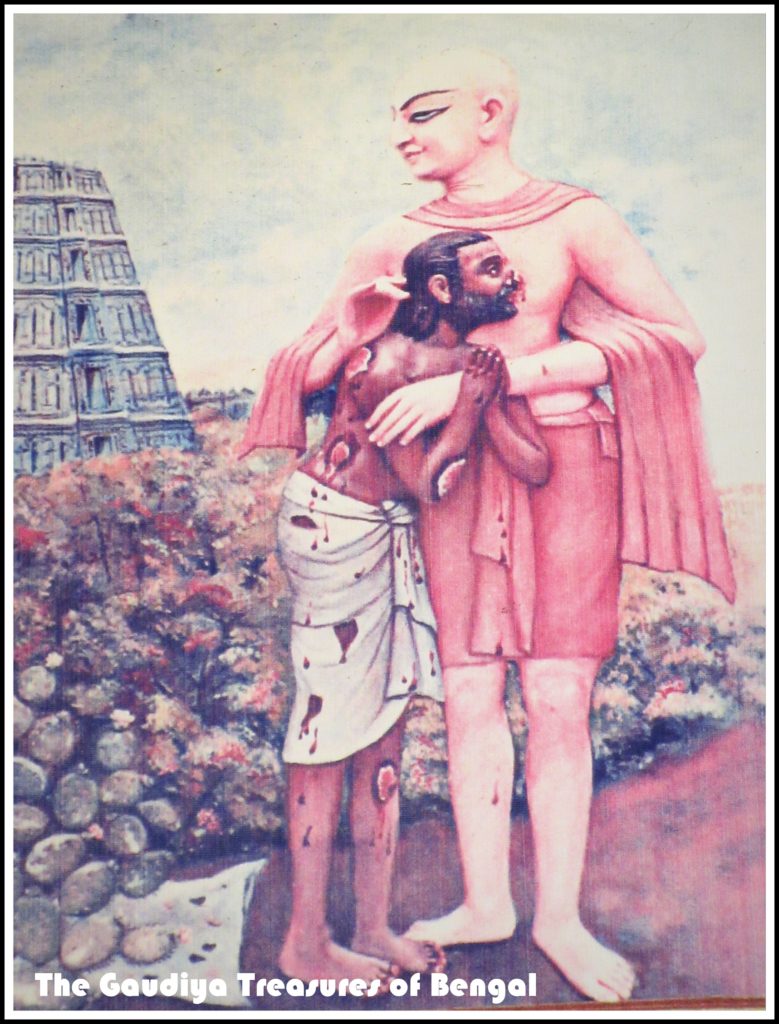
Bhrigu Maharaja replied that there was not much difference between the various castes. When Lord Brahma initially created this universe, all the living entities were endowed with godly qualities and they were all brahmanas. Later on, as people became degraded, they attained the designations of different varnas (castes). He went on to explain that when the brahmanas commit violence, speak lies, become greedy, earn their livelihood by any and all activities, lose their purity by committing sinful activities, then they become degraded into shudras. Hence, it is the qualities, and not one’s birth and lineage, that determines whether a person is a brahmana. One who realizes the self, is always satisfied, devoid of faults like lust and anger, possesses qualities like peacefulness, self control, and is devoid of envy, thirst for material enjoyment, illusion and is untouched by pride, false ego and so on – such a person is a brahmana.
Innumerable incidents illustrating this fact are known to those who are well aware of Indian history. For example, Gadhi was the son of Kusika and belonged to the Chandra (moon) dynasty. He was the king of Kanyakubja. His son, Visvamitra, advanced to become a brahmana, a great Brahma rishi, by the strength of his austerities. Even the great king Bali Maharaja, bore sons, some of who became brahmanas and some of who became Kshatriyas. His brahmana sons came to be known as Baleya brahmanas, whereas his Kshatriya sons came to be known as Baleya Kshatriyas.
Varna is determined by one’s qualities :
So when the snake asked – ‘O Maharaja Yudhisthira, who is a brahmana ? and what is the object of knowledge ? You are very intelligent, therefore I will be enlightened by your statement’
Maharaja Yudhisthira then replied – ‘A person who possesses truthfulness, charity, forgiveness, sobriety, gentleness, austerity, and lack of hatred. Such a person is called a brahmana’.
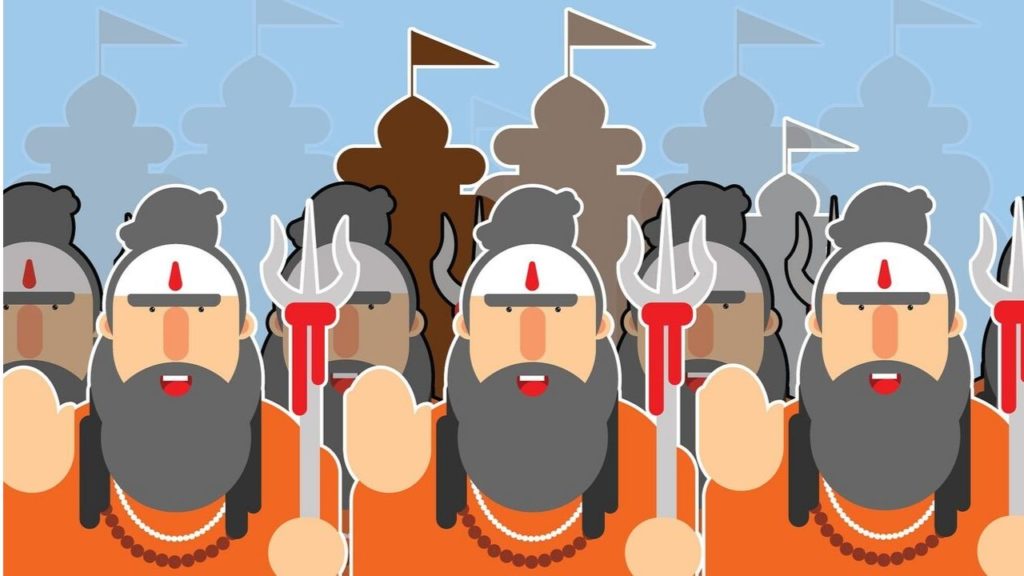
The snake then enquired – ‘But, even shudras possess these qualities. Many of them possess truthfulness, charity, freedom from anger,nonviolence, noneviousness, and lack of hatred’.
So Maharaja Yudhisthira then clarified ,’if such symptoms are found in a shudra then he should never be considered to be a shudra, just as a brahmana is not a brahmana if he does not possess these qualities.O snake, only a person who is endowed with the characteristics of a brahmana can be called a brahmana, otherwise he is simply a shudra’.
Elsewhere the Brahma Sutras reveal –
tad abhava nirdharane ca pravrtteh
–
Whether a person belongs to a varna other than that of his birth may be ascertained by considering his qualities.
The Shanti parva of Mahabharata narrates a similar pastime in which Bharadwaja muni had a similar doubt and he clarified the same with Bhrigu Maharaja. He asked that since there were innumerable categories of animate and inanimate living entities – how can one possibly determine their varnas or their castes?
Bhrigu Maharaja replied that there was not much difference between the varnas. When Lord Brahma initially created this universe, all the living entities were endowed with godly qualities and they were all brahmanas.Later on, as people became degraded, they attained the designations of different varnas.
He went onto explain that when the brahmanas commit violence, speak lies, become greedy, earn their livelihood by any and all activities, lose their purity by sinful activities.. then they become degraded into shudras.
The Vishnu yamala goes as far as saying :
asuddhah sudra kalpa hi brahmanah kali sambhavah
“The brahmanas born in Kali-yuga are impure and no better than the shudras “
Thus it must be quite clear by now that it is one’s nature and qualities ..and not one’s birth and lineage that determines one’s varna and caste. One’s varna is currently ascertained only from his birth. But the ancient and rational system approved by the Vedas is to ascertain one’s varna by considering one’s symptoms. This is not the new imagination of selfish people. Many people were not born in brahmana families but have gone onto become brahmanas by proper initiation. Innumerable incidents illustrating this fact are known to those who are well aware of the Indian history. For example Gadhi was the son of Kusika who belonged to the Candra dynasty. He was the king of Kanyakubja.His son, Visvamitra, went on to become a brahmana , a great brahmarishi, by the strength of his own austerities. Even the great king Bali maharaja, bore sons, some of who became brahmanas and some of who became kshatriyas. His brahmana sons came to be known as Baleya brahmanas, whereas his kshatriya sons came to be known as Baleya kshatriyas.
Beyond Caste :
Now let us find what Srimad Bhagavatam has to say about this subject. Srimad Bhagavatam reveals :
“Lord Shiva said that a person who executes his occupational duty of varnashrama properly for one hundred births becomes qualified to occupy the post of Brahma, and if he becomes more qualified, he can approach Lord Shiva. However, a person who is directly surrendered unto Lord Krsna, or Vishnu, in unalloyed devotional service is immediately promoted to the spiritual planets. Lord Shiva and the other demigods attain these planets only after the destruction of this material world.”
Padma Purana speaks on similar lines and stresses on pure devotional service – devotional service unto Lord vishnu or Lord Krishna, as compared to one executing his occupational duties as per the system of varna and ashrama. The Padma Purana says –
na karma bandhanam janma vaishnavanam ca vidyate
vishnur anucaratvam hi moksamahur manisinah
“Vaisnavas are not bound by the fruitive activities or forced to take birth, because learned persons have firmly declared that service to Lord Vishnu is liberation itself “
Materialistic people who are proud of their high births or their high castes are actually puppets in the hands of the Lord’s illusory potency, which is also known as ‘Maya’. These people try to act independently in order to accumulate fruitive activities to subsequently enjoy their senses, their mind or their ego. The devotees of the Supreme Lord so not fall for this trap. They know that the attempts to become the master of this material world are in reality a service to Maya, the illusory potency of the Lord, which is the root cause of bondage in this world of birth and death. Hence they give up their hellish fruitive mentality and understand that the eternal service of the Supreme Lord is their only constitutional duty. The devotee of the Supreme Lord realizes that the very essence of the Vedas is to render unconditional loving devotional service unto Sri Krishna , the Supreme Lord. It is revealed in the Bhagavad Gita –
‘vedais ca sarvair aham eva vedyo’
–
Of all the Vedas, only I, Sri Krishna, am to be known
Identifying oneself with anything other than the part and parcel of the Supreme Lord is an illusion that is detrimental to one’s spiritual progress.

The Brahmanas represent the Lord’s mouth, the Kshatriyas His arms, the Vaisyas His abdomen (belly, waist, thighs), and the Shudras are born of His legs. This has been confirmed in the Srimad Bhagavatam. Thus the implementation of the caste system is an arrangement by the Lord.
sri-camasa uvacha
Mukha-bahuru-padebhyah
purusasyasramaih saha
catvaro jajnire varna
gunair vipradayah prithak
(Srimad Bhagavatam , 11.5.2)
However, on a spiritual plane, all living entities are part and parcels of the Supreme Lord. The purpose of the caste system is to engage individuals, as per their nature and qualities, in the service of the Lord. Such a system is auspicious for the individual and helps elevate his consciousness. It is also beneficial for society at large. A particular individual is qualified for engaging in actions per his caste. A brahmana is qualified to bathing three times a day, deity worship, reciting the Vedas, teaching, serving as a priest, taking vows, leading the life of a brahmachari (celibate) or a sannyasi (renunciant). A Kshatriya is qualified for fighting righteous wars, ruling a kingdom, protecting others, participating in works of charity, and social relief. A Vaishya is qualified for raising and protecting animals, agriculture, and commerce. A shudra is qualified to serve the deity without mantras and serving the other three castes.
Krishna Chaitanya lays the foundation of a casteless society
That is why Sri Chaitanya Mahaprabhu when He sat with Ramananda Raya on the banks of Godavari…Sri Chaitanya rejected this institution of Varnashrama as something external and not conducive to pure devotional service. Sri Chaitanya Mahaprabhu has proclaimed :
“I am a pure spirit soul. I am not a brahmana, I am not a kshatriya, I am not a vaishya or a shudra . Nor am I a brahmachari, a householder, a vanaprastha or a sannyasi .I identify Myself only as the servant of the servant of the servant of the lotus feet of Lord Sri Krishna…”
Sri Chaitanya Mahaprabhu had preached about pure devotional service, ecstatic love and the absolute truth by making Ramananda Raya, a householder who was born in a low caste, as the speaker…while Sri Chaitanya Mahaprabhu Himself, the exalted brahmana sannyasi, and under His orders Pradyumna Mishra who was also a purified brahmana…both of them became the audience of Ramananda Raya’s philosophical discourses.

Sri Chaitanya Mahaprabhu exhibited the glories of the holy name of the Supreme Lord through Haridas Thakura, who was born in a Muslim family. Similarly, He exhibited the essence of devotional service through Sanatana Goswami, who had almost been converted into a Muslim. Srila Haridas Thakura used to chant 3 lakh holy names of Krishna daily and is also renowned as the Namacharya of the Gaudiya Vaishnava sampradaya. Sri Raghunatha das goswami, one of the most revered and one of the six exalted Goswamis of Vrindavana, was born in a kayastha family. He devotional mood and sentiments are glorified in the entire world.
Thus it has to be understood that the designations of Varna and Ashrama are temporary concepts related to one’s body. These designations are finished as soon as one gives up his body. However the soul is immortal and its journey is eternal. The soul’s transmigration from one body to the next only ends when one obtains the shelter of the lotus feet of Lord Hari, or Vishnu, the Supreme Lord. Hence a Vaishnava , or a devotee of Lord Vishnu, does not identify himself with all these external designations.
Sri Chaitanya Mahaprabhu had said –
‘kiba vipra, kiba nyasi, Shudra kene naya ,yei krishna-tattva-vetta, sei ‘guru’ haya’
–
One may be born a brahmana, a shudra..or he may be a sannyasi. These external designations are not very important. However, what is really important is whether a person is well versed in the science of God..in the science of Krishna or not. If he is well versed in the science of Krishna ,then that person is eligible to become a Guru or a spiritual master, irrespective of his varna or ashrama.
Thus it is very clear that Sri Chaitanya Mahaprabhu had rejected this institution of varnashrama, in its present form that has become prevalent in the Indian society today…and instead He encouraged others to rise beyond these material designations, and focus their activities..focus their strengths..focus their skills towards the service of the Supreme Lord Sri Krishna. He stressed that one should redirect all of one’s strengths towards satisfying the Supreme Lord without having a tinge of desire for satisfying one’s own senses.
Thus when little Raghunatha das wanted to renounce his own family..and wanted to join Sri Chaitanya Mahaprabhu’s movement full time..at that time, Mahaprabhu had actually discouraged him and advised him not to become a show-bottle renunciant. Outwardly renouncing the family and society while harbouring desires for sense gratification is just like the renunciation of a monkey. Instead it is better to stay at one’s home, and practice devotion engaging one’s mind, body and senses in the service of the Supreme Lord. Sri Chaitanya mahaprabhu hence preaches –
yei bhaje sei bada abhakta hina chara
krishna-bhajane nahi jati-kuladi-vicara
–
Anyone who discharges devotional service is exalted, whereas a non-devotee is always condemned and abominable. In the discharge of devotional service to the Supreme Lord, there is no consideration of one’s background,one’s status or one’s family.
We would like to end this presentation by citing a beautiful verse by Srila Prabodhananda Sarasvati. Srila Prabodhananda Sarasvati is considered to be an authority on the Vedic scriptures. He was a great follower of Sri Krishna Chaitanya. Sri Chaitanya Mahaprabhu inspires us to rise above this petty caste system and instead focus our energies and dedicate our lives in the service of the Supreme Lord. Pure devotional service is the actual purport of the Vedic scriptures and the real goal of one’s existence.So brothers and sisters – let us not waste anymore time and pray for Sri Krishna Chaitanya’s mercy so that we can dedicate our lives..we can engage our lives..in this noble mission. Srila Prabodhananda writes in Chaitanya Chandramrta –
For those who have attained the merciful sidelong glance of Sri Krishna Chaitanya, impersonal liberation becomes as painful as going to hell, the heavenly cities of the demigods seem to be as trivial as mere flowers floating in the sky, the venomous and poisonous fangs of the untamable black snakes of the senses become extracted and uprooted, the whole world which is otherwise full of misery becomes full of supreme joy and the exalted positions of Brahma, Indra and all the demigods become as insignificant as those of tiny insects. Let us glorify that supremely merciful Sri Krishna Chaitanya.